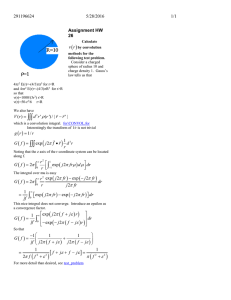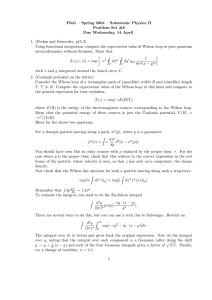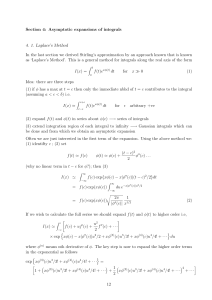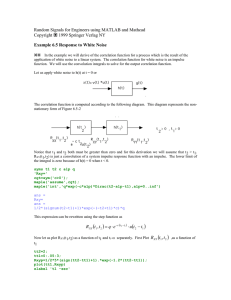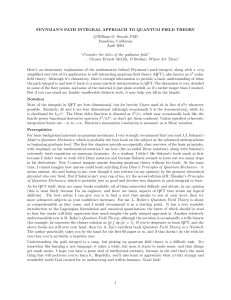Document 13715219
advertisement
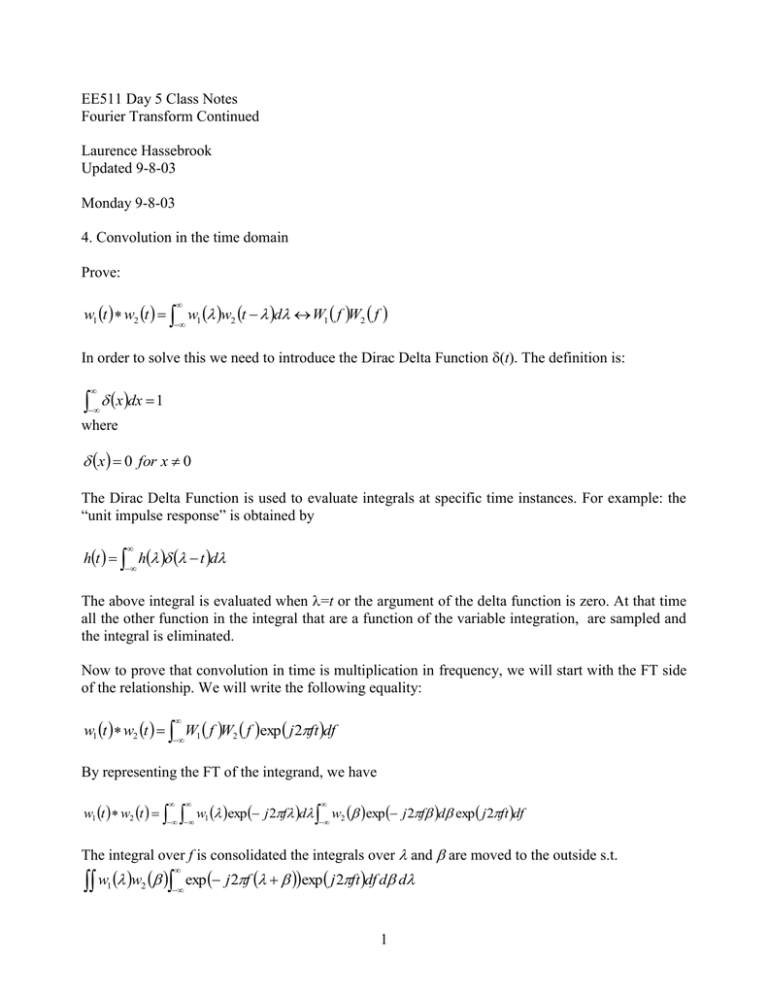
EE511 Day 5 Class Notes Fourier Transform Continued Laurence Hassebrook Updated 9-8-03 Monday 9-8-03 4. Convolution in the time domain Prove: w1 t w2 t w1 w2 t d W1 f W2 f In order to solve this we need to introduce the Dirac Delta Function (t). The definition is: xdx 1 where x 0 for x 0 The Dirac Delta Function is used to evaluate integrals at specific time instances. For example: the “unit impulse response” is obtained by ht h t d The above integral is evaluated when =t or the argument of the delta function is zero. At that time all the other function in the integral that are a function of the variable integration, are sampled and the integral is eliminated. Now to prove that convolution in time is multiplication in frequency, we will start with the FT side of the relationship. We will write the following equality: w1 t w2 t W1 f W2 f exp j 2ft df By representing the FT of the integrand, we have w1 t w2 t w1 exp j 2f d w2 exp j 2f d exp j 2ft df The integral over f is consolidated the integrals over and are moved to the outside s.t. w w 1 2 exp j 2f exp j 2ft df d d 1 The inside integral is the inverse FT of a linear phase term which is a Dirac delta function. 2


